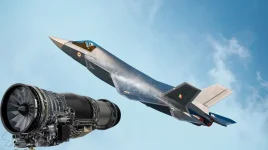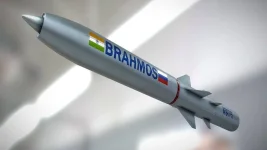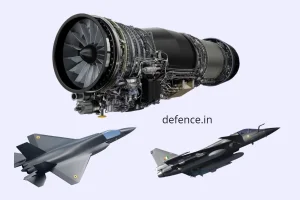- Views: 2K
- Replies: 17
The potential acquisition of Chinese J-35A fifth-generation stealth fighters by the Pakistan Air Force (PAF) is compelling a significant shift in Indian military strategy, according to defence analysts.
Experts suggest that to counter the advanced threat, the Indian Air Force (IAF) must prioritise preemptive strikes on Pakistani airbases before terrorist infrastructure to cripple the PAF fleet before it can be deployed in any counterstrikes.
This emerging doctrine is heavily influenced by the tactical successes of "Operation Sindoor" in May 2025, where the IAF conducted large-scale strikes against PAF air installations.
The Shenyang J-35A is a twin-engine, multi-role stealth fighter, which represents a generational leap in aerial combat technology. Its design focuses on low observability, making it difficult for conventional radar to detect.
The aircraft is expected to be equipped with advanced Active Electronically Scanned Array (AESA) radar and long-range PL-17 air-to-air missiles, capable of engaging targets from distances of over 200 kilometres.
Should the acquisition proceed, with reports suggesting a delivery of 12 to 24 jets by 2027-28, Pakistan would become the first operator of a fifth-generation fighter in South Asia.
This timeline places the PAF years ahead of India's indigenous Advanced Medium Combat Aircraft (AMCA) program, which is not anticipated to enter service until the mid-2030s.
The primary concern for Indian defence planners is the J-35A's proficiency in conducting Suppression of Enemy Air Defences (SEAD) missions.
A SEAD operation is a military action designed to neutralise ground-based air defence systems like surface-to-air missile (SAM) batteries and radar installations.
The stealth characteristics of the J-35A could allow it to penetrate India’s formidable multi-layered air defence network, which includes the powerful S-400 Triumf system, and target critical command and control centres, creating an opening for follow-on attacks by less advanced aircraft.
Analysts point to the recent "Operation Sindoor" as a guide for future strategy.
During "Operation Sindoor," which took place from May 7-10, 2025, the IAF executed precision strikes on 11 PAF airbases, including key installations at Nur Khan, Mushaf, and Rahim Yar Khan.
Using a combination of stand-off weaponry such as BrahMos cruise missiles, Rampage air-to-surface missiles, and Harop loitering munitions, the operation successfully damaged runways, hardened aircraft shelters, and radar equipment.
The strikes reportedly neutralised a significant portion of the PAF's fighting capability and revealed critical vulnerabilities in Pakistan's Chinese-supplied HQ-9B air defence system, which was unable to counter the coordinated assault.
This experience has solidified the view that a proactive offence is the most effective defence against the J-35A threat.
"To counter this, the IAF must adopt a proactive strategy, striking airbases like Nur Khan, Mushaf, and Bholari, which are likely to host J-35As, to ground them before they can be deployed effectively," a defence analyst stated.
By destroying the jets on the ground, the IAF can prevent the PAF from leveraging its most advanced asset to degrade India's Integrated Air Command and Control System (IACCS), a sophisticated network that fuses data from the S-400, Akash-NG, and Barak-8 missile systems into a single, cohesive defensive shield.
Strategic PAF facilities, such as the Mushaf base in Sargodha, which already hosts F-16 and JF-17 squadrons, and the modern Bholari airbase located just 270 km from the international border, are considered high-priority targets in any preemptive strike plan.
While Pakistan's challenging economic situation may limit the number of J-35As it can procure and operate, even a small, technologically superior fleet presents a strategic threat that India cannot afford to ignore.
The lessons from Operation Sindoor indicate that first decisive action against enemy airpower at its source will be essential to maintaining air superiority in a future conflict.




